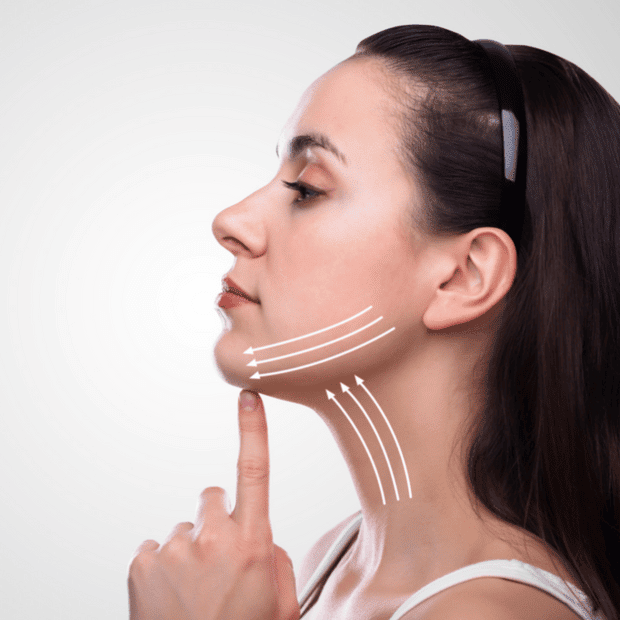Facelift Financing
Get pre-qualified for a personal loan in just minute. Checking rates won’t affect your credit score







How to Get a Facelift Loan
If you are unhappy with the way your face and neck are aging, you have probably tried all the creams, lotions, serums, and cosmetics to help combat these signs, but sometimes these things just don’t work as well as you had hoped.
When this is the case, a facelift procedure can help you to get back your skin's youthful appearance and leave you feeling more confident. Facelifts are expensive, but with facelift financing, you can gain the funding you need to look 10 years younger.
Applying for facelift financing is fast and easy:
Compare personal loan rates
Compare personal loan rates in April, 2025
What is facelift financing?
Facelift financing is a way to pay for a facelift without having to pay the entire cost upfront. The cost of a facelift can vary depending on the surgeon, the location, and the extent of the procedure. However, it is typically a costly procedure, so financing can be a helpful option for people who do not have the cash on hand to pay for it.
How does facelift financing work?
There are a few different ways that facelift financing can work. One way is to use a credit card with a 0% introductory APR. This means that you will not have to pay any interest on the loan for a certain period of time, typically 6 to 18 months. However, you will need to pay off the entire balance before the introductory APR period ends, or you will be charged interest on the entire amount.
Another way to finance a facelift is to use a medical financing company. These companies specialize in providing loans for medical procedures, and they often offer lower interest rates than credit cards. However, they may also have stricter credit requirements.
Finally, you can also finance a facelift through a personal loan. Personal loans are unsecured loans that can be used for any purpose, including medical procedures. The interest rates on personal loans vary depending on your credit score and the lender.
No matter which method of facelift financing you choose, it is important to read the terms of the loan carefully before you sign anything. This will help you understand the interest rates, fees, and repayment terms so that you can make an informed decision.
What is a facelift?
A facelift is a procedure that lessens signs of aging of the skin on the face and neck, such as wrinkles and sagging skin.
It involves making an incision from the temples, around the ear, to the lower scalp. The skin is then tightened, and excess skin is trimmed. An incision can also be made under the chin to improve signs of aging on the neck.
How much does a facelift cost?
The cost of a facelift can vary depending on a number of factors, including the surgeon's fees, the location of the surgery, and the extent of the procedure. However, the average cost of a facelift in the United States is $8,005.
What is a mini facelift?
A mini facelift, also known as a limited incision facelift, is a surgical procedure that lifts and tightens the skin on the lower half of the face. It is a less invasive procedure than a full facelift, and it typically takes less time to perform.
A mini facelift is typically performed under local anesthesia with sedation, which means that you will be awake during the procedure, but you will feel relaxed and comfortable. The incisions are made in front of the ears and behind the hairline, and they are typically no longer than 2 inches.
During a mini facelift, the surgeon will lift the skin and underlying tissue, remove any excess skin, and then reposition the tissue. The surgeon may also tighten the underlying muscles and ligaments to help improve the overall appearance of the face.
What is a stem cell facelift?
A stem cell facelift is a non-surgical procedure that uses stem cells to improve the appearance of the face. Stem cells are undifferentiated cells that have the potential to develop into different types of cells in the body. When injected into the face, stem cells can help to regenerate collagen and elastin, which are the proteins that give the skin its structure and elasticity.
Stem cell facelifts are typically performed under local anesthesia. The surgeon will make small incisions in the face and then inject the stem cells into the desired areas. The incisions are typically very small and do not require stitches.
The recovery time for a stem cell facelift is typically short. You may experience some bruising and swelling, but these side effects should resolve within a few days. You may also need to wear a compression garment for a few days after the procedure.
What is the best type of non-surgical facelift?
If you feel that a facelift is too invasive (or expensive) for you, there are some popular non-surgical facelift alternatives, including:
- Dermal Fillers: Dermal fillers, such as hyaluronic acid-based injectables, can restore lost volume, reduce wrinkles, and improve facial contours. They provide immediate results with minimal downtime, effectively rejuvenating the face by filling in lines and adding volume to targeted areas.
- Botox and Dysport: Botulinum toxin injections, commonly known as Botox or Dysport, help relax muscles that cause wrinkles and fine lines. They are particularly effective in smoothing out forehead lines, crow's feet, and frown lines, providing a more youthful and refreshed appearance.
- Thread Lift: This non-surgical procedure involves inserting dissolvable threads into the skin to lift and tighten sagging facial tissues. Thread lifts can improve the appearance of the cheeks, jawline, and neck, resulting in a subtle but noticeable lift without surgery.
- Laser and Radiofrequency Treatments: Laser resurfacing and radiofrequency treatments use energy-based devices to stimulate collagen production, improve skin texture, reduce wrinkles, and tighten loose skin. These treatments can target specific areas or provide overall facial rejuvenation.
- Ultherapy: Ultherapy is a non-invasive procedure that uses focused ultrasound energy to lift and tighten the skin. It stimulates collagen production in the deeper layers of the skin, resulting in gradual improvements and a lifted appearance over time.
- Chemical Peels: Chemical peels involve the application of a chemical solution to exfoliate the outer layers of the skin, promoting cell turnover and revealing smoother, more youthful skin. Peels can improve skin tone, texture, and reduce the appearance of fine lines and sun damage.
What should I expect during facelift recovery?
The recovery period after a facelift can vary depending on the extent of the procedure and your individual healing time. However, there are some general things to expect during facelift recovery.
- Bruising and swelling: Bruising and swelling are common after a facelift. The bruising will typically peak around 3-5 days after surgery, and the swelling will gradually subside over the next few weeks.
- Pain: You may experience some pain after a facelift. Your surgeon will prescribe pain medication to help manage the pain.
- Numbness: You may experience some numbness in your face after a facelift. This is usually temporary and will gradually improve over time.
- Tightness: Your face may feel tight after a facelift. This is because the skin and underlying tissues have been lifted and tightened. The tightness will gradually subside over time.
- Scarring: You will have scars from the incisions made during your facelift. The scars will typically fade over time, but they may never disappear completely.
Most people are able to return to their normal activities within 2-4 weeks after a facelift. However, it is important to listen to your body and take it easy during your recovery. If you have any concerns, be sure to talk to your surgeon.
How can I finance a facelift?
The best methods for financing a facelift are:
- Savings
- The most affordable option: Before considering borrowing money, you should always look to use your savings to cover the cost of a facelift, even if it's just a portion of the total. This will be the most affordable option for you and will considerably lower your potential debt.
- Lowers your debt: If you can use your savings to cover even a portion of the cost of a facelift, you will lower your debt and make the procedure more affordable.
Personal Loans
- The most common type of financing: Personal loans are the most common type of financing used to fund a facelift. This type of financing allows you to spread out the cost over a longer period, sometimes up to five years. The amount you will be able to borrow, as well as the interest rate offered to you, depends largely on your creditworthiness. Since the lump sum is paid directly into your bank account, you can decide exactly which costs your loan is put toward.
- Spread out the cost: Personal loans can help you spread out the cost of a facelift over a longer period of time, making it more affordable.
- Depends on your creditworthiness: The amount you can borrow and the interest rate you'll be offered will depend on your creditworthiness.
- Lump sum: The lump sum from a personal loan is paid directly into your bank account, so you can decide how to use it.
0% APR Credit Cards
- A last resort: You should only consider a credit card as a last option. However, if you are able to use some savings or are able to qualify for a high credit limit, a 0% APR credit card, or at least one with a low interest rate (below 6%), is an option for you.
- Low interest rate: If you can qualify for a 0% APR credit card, you can avoid paying interest on your balance for a certain period of time. This can help you save money on the cost of your facelift.
- Low interest rate (below 6%): If you can't qualify for a 0% APR credit card, you may be able to find one with a low interest rate (below 6%). This will still help you save money on the cost of your facelift.
HELOC
- Cover other procedures: If you intend to have other procedures as well as a facelift, you might want to take on a Home Equity Line of Credit (HELOC) to cover the high costs. You can borrow from this line as and when you need to, only paying interest on what you use. As your home is used to secure the loan, you can often get a high credit limit, but it does mean putting your home at risk should you default on repayments.
- Borrow as needed: A HELOC allows you to borrow money as needed, so you can only borrow what you need for your facelift and other procedures.
- Interest on what you use: You only pay interest on the money you borrow, so you can save money on interest if you only borrow what you need.
- Secured by your home: A HELOC is secured by your home, so if you default on your repayments, you could lose your home.
401(k) Loan
- Depending on your plan: Depending on your 401(k) plan, you may be able to take out a loan against your retirement savings to cover the cost of a facelift. This doesn't require a credit check and there is no interest to pay, but it will mean having less money to use when you do retire.
- No credit check: A 401(k) loan doesn't require a credit check, so you may be able to qualify even if you have bad credit.
- No interest to pay: There is no interest to pay on a 401(k) loan, so you can save money on interest.
- Less money for retirement: Taking out a 401(k) loan will mean having less money to use when you do retire.
In-House Financing
- The majority of surgeons: The majority of cosmetic surgeons will offer in-house financing that will allow you to pay for your facelift in installments. This is usually in the form of a personal loan through a partner lender, and the money is paid to the surgeon directly.
- Desireable terms: A lot of in-house financing comes with desirable terms, such as low interest rates and no credit checks. However, be sure to look at external lenders first to ensure you can't find a better deal with one of them.
Compare Offers

Ready to find the best loan for cosmetics & plastic surgery procedures? Get started!
Need help finding the right loan?
No worries, we've got you covered! Compare personalized loan options in just minutes.
How Pasha Funding Works

Pros & Cons of Facelift Financing
Pros of Financing a Facelift
- Boost your confidence. A facelift can help you look and feel younger, which can boost your confidence.
- No need to save up. If you don't have the cash on hand to pay for a facelift, financing can help you get the procedure without having to wait.
- Spread out the cost. Financing can help you spread out the cost of a facelift over time, making it more affordable.
- Low interest rates. If you have good or excellent credit, you may be able to get a loan with a low interest rate, which can save you money.
Cons of Financing a Facelift
- Can be costly. Even with financing, a facelift can be expensive. This means that you may have to put off other large purchases until you have repaid the loan.
- Expensive for fair or bad credit. If you have fair or bad credit, you may have to pay higher interest rates on a loan, which can make the facelift more expensive.
- Risk of default. If you default on a loan, you could damage your credit score and have other financial consequences.
What credit score do you need to obtain facelift financing?
Financing a facelift will be less affordable for you if you have a credit score don’t have a credit score of at least 600, but if you are looking for the best, most affordable funding options, you will need a credit score of 690+.
What are the most common types of facelift personal lenders?
In most cases, a personal loan is the best form of financing for a facelift procedure. Here are some of the best options:
- Avant: Borrow $2,000-$35,000 with a minimum credit score of 550.
- Axos Bank: Borrow $10,000-$50,000 with a minimum credit score of 700.
- LendingClub: Borrow $1,000-$40,000 with a minimum credit score of 600.
- LightStream: Borrow $5,000-$100,000 with a minimum credit score of 660.
- Universal Credit: Borrow $1,000-$50,000 with a minimum credit score of 560.
- Upgrade: Borrow $1,000-$50,000 with a minimum credit score of 560.
How to qualify for facelift financing
Here are the steps on how to qualify for affordable facelift financing:
- Check your credit score. Your credit score is one of the most important factors that lenders will consider when you apply for a loan. You can get your credit score for free from several websites, such as Credit Karma or Experian.
- Calculate your debt-to-income ratio. Your debt-to-income ratio is the percentage of your monthly income that goes towards debt payments. Lenders will want to see that your debt-to-income ratio is below 30%. You can calculate your debt-to-income ratio by adding up all of your monthly debt payments and dividing that number by your monthly income.
- Get pre-approved for a loan. Before you apply for a facelift loan, it's a good idea to get pre-approved for a loan. This will give you an idea of how much money you can borrow and what your interest rate will be. You can get pre-approved for a loan through a bank, credit union, or online lender.
- Compare different lenders and loan terms. Once you've been pre-approved for a loan, you'll need to compare different lenders and loan terms. You'll want to compare the interest rates, loan terms, and fees.
- Apply for a loan. Once you've chosen a lender and loan terms, you can apply for a loan. The lender will review your application and credit score and let you know if you've been approved.
Cosmetic Financing Options
Breast
Body Lift
Male
Fat Reduction
Face & Neck
Personal Loans for Every Occasion
Find Your Best Rate
Compare Best Personal Loans
Personal Loan Payoff Calculator
Personal Loan Lender Reviews
Personal Loans By Credit
Personal Loans for Fair Credit
Personal Loans for Good Credit
Personal Loans for Excellent Credit
Personal Loan Types
Auto Repair Loans
Credit Card Consolidation Loans
Fast Personal Loans
Home Improvement Loans
Horse Barn Financing
Wedding Loans
Family Planning Loans
Funeral Financing
Land Purchase Financing
Manufactured Home Financing
Medical Loans
Cosmetic & Plastic Surgery Financing
Owner Builder Construction Loans
Personal Loans for House Down Payment
Personal Loans for Self Employed
Personal Loans for Furniture Expenses
Student Loans
Debt Consolidation Loans
Vacation & Travel Loans
Emergency Personal Loans
Personal Loans with Co-signers
Home Improvement Financing
Appliance Financing
Bathroom Remodel Financing
Basement Remodel Financing
Boat Dock Loans
Deck Financing
Driveway Paving Financing
Fence Financing
Flooring Financing
Furnace Financing
Garage Financing
Home Addition Financing
Hot Tub Financing
HVAC Financing
Home Insulation Financing
Interior & Exterior Painting Financing
Kitchen Remodel Financing
Kitchen Cabinet Financing
Pole Barn Financing
Roof Financing
Solar Panel Financing
Swimming Pool Financing
Sunroom Addition Loans
Window Replacement Financing
Loan rate & terms disclosure: Prequalified rates are based on the information you provide and a soft credit inquiry. Receiving prequalified rates does not guarantee that the Lender will extend you an offer of credit. You are not yet approved for a loan or a specific rate. All credit decisions, including loan approval, if any, are determined by Lenders, in their sole discretion. Rates and terms are subject to change without notice. Rates from Lenders may differ from prequalified rates due to factors which may include, but are not limited to: (i) changes in your personal credit circumstances; (ii) additional information in your hard credit pull and/or additional information you provide (or are unable to provide) to the Lender during the underwriting process; and/or (iii) changes in APRs (e.g., an increase in the rate index between the time of prequalification and the time of application or loan closing. (Or, if the loan option is a variable rate loan, then the interest rate index used to set the APR is subject to increases or decreases at any time). Lenders reserve the right to change or withdraw the prequalified rates at any time.
Requesting prequalified rates on Credible is free and doesn't affect your credit score. However, applying for or closing a loan will involve a hard credit pull that impacts your credit score and closing a loan will result in costs to you.









